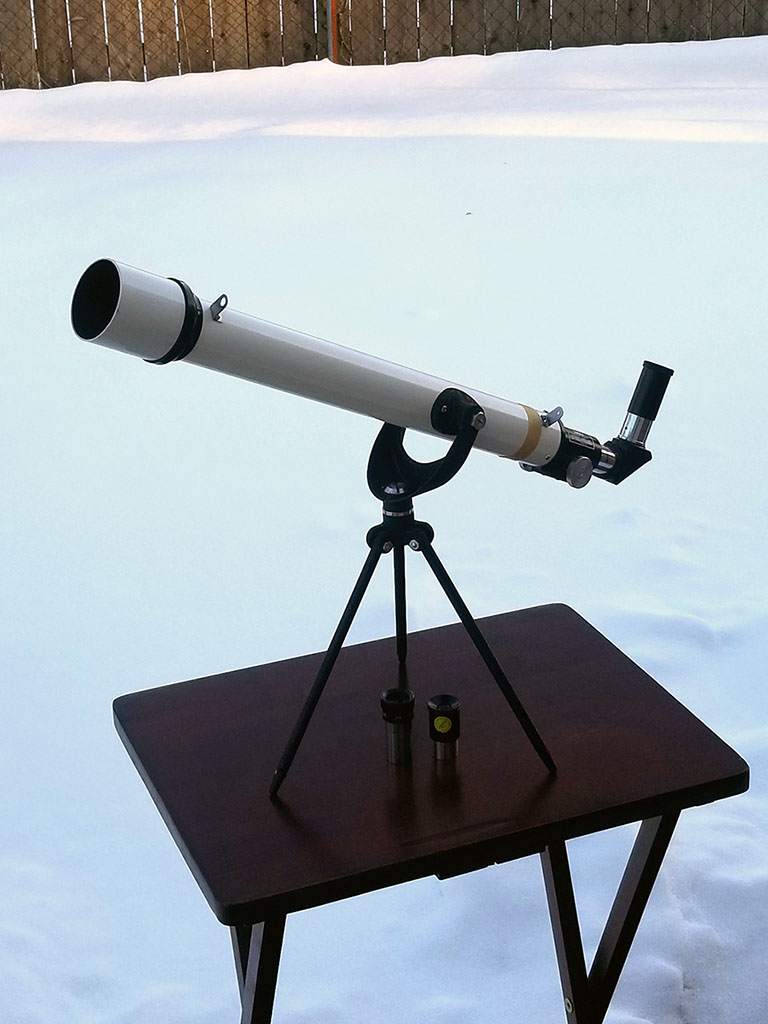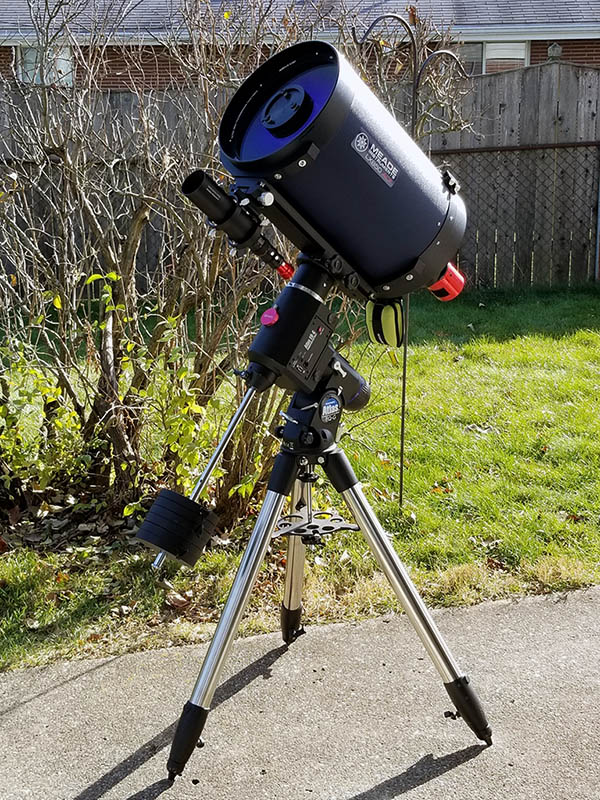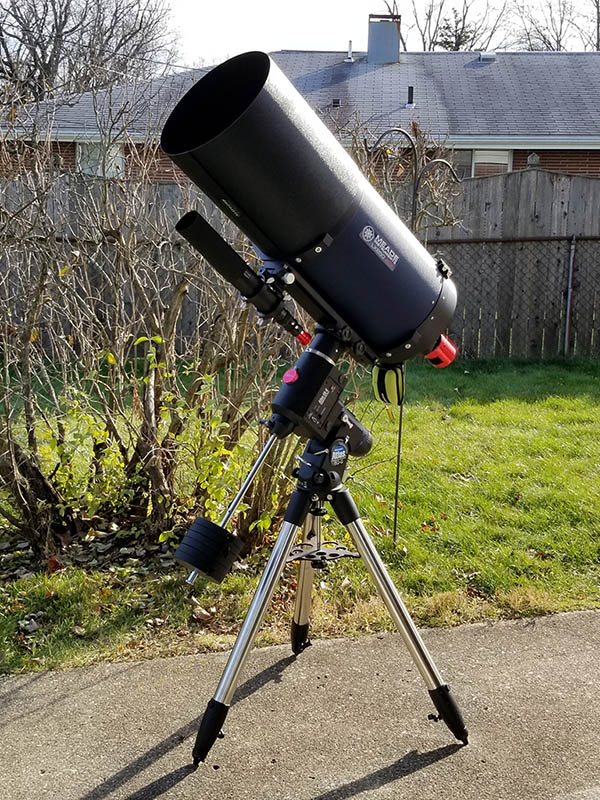
I can’t believe that I found one of these, and in mint condition as well! This is a 1950s vintage Tasco 6T, a 50mm f/12 refractor, all-metal construction, on a tabletop mount, and with a darling little peep sight. My parents had one of these (Sears branded) and this was the first telescope that I used. Some of my earliest memories are of taking this out to Swope Park in Kansas City and using it to watch the skyline. I remember many wonderful night pointing it at everything, seeing the moon, the Pleiades, and of course Saturn. I wore the poor thing out until I accidentally dropped the lens and broke it sometime in the later half of the 1960s. I learned a lot from this little scope and it’s wonderful to have to opportunity to have one almost identical to my original, and in much better condition! Now that I have a really nice set of quality 0.965” eyepieces it’s going to make a great little spotter. I had it out earlier this evening taking a peek at the moon at 20x and 33x and it looked great!







Recent Comments